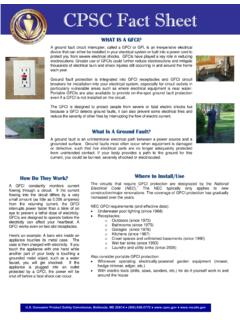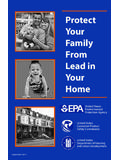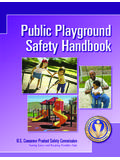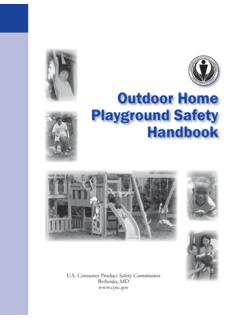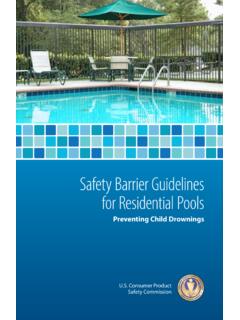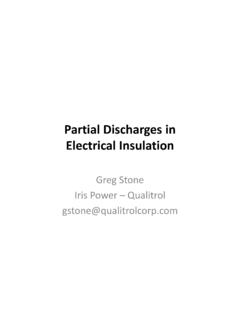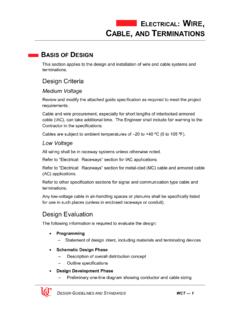Transcription of HOME ELECTRICAL Safety Checklist - CPSC.gov
1 HOME ELECTRICAL Safety ChecklistKeeping You and Your Family Safe, Consumer Product Safety Commission 4330 East West Highway Bethesda, MD 20814 Pub 513 July 2008 This document was prepared by cpsc staff, has not been reviewed or approved by, and may not necessarily reflect the views of, the recommends performing the HOME ELECTRICAL Safety Checklist every 6 COMPLETED: _____Next Check-up: _____HOME ELECTRICAL Safety CHECKLISTALL year, ELECTRICAL products are associated with injuries, deaths, and fires in homes. Use this Checklist to spot possible Safety problems before they occur. This Checklist is a room-by- room guide and allows you to identify and follow up on Safety concerns. The Consumer Product Safety Commission staff recommends inspecting ELECTRICAL products in your home every six months. Each time you move into a home or change your clocks is the perfect time to check your smoke alarms and perform this Checklist !In All Rooms Lights Portable Electric Heating Equipment Three Prong Adapters ELECTRICAL Cords Electric Outlets and Switches Outlets with Ground Fault Circuit Interrupters In the Kitchen Counter Top Appliances Large Appliances In All Bathrooms Ground Fault Circuit Interrupters Small ELECTRICAL Appliances In All BedroomsElectric Blankets In Basement, Garage, and Work AreasFuse Box Circuit Breaker Box All ELECTRICAL Power Tools Outside of Your HomeOutlets ELECTRICAL Garden Tools Extension Cords Used Outdoors Pools and SpasHOME ELECTRICAL Safety ROOMSIn ALL Rooms Check Lights Check each light in the room, including lamps and ceiling fixtures.
2 Is each bulb the appropriate wattage for its fixture? NO: Replace the bulb with the correct wattage bulb. If you aren t sure, use a bulb 60 watts or less. For unmarked ceiling fixtures with miniature bulbs, use 25 watt bulbs. A bulb that is a higher wattage than recommended may overheat the light fixture , wiring or nearby combustible materials, leading to a fire. Check Portable Electric Heating Equipment Does the heater have a seal of a nationally-recognized testing laboratory (NRTL), such as UL, ETL, or CSA? NO: Replace heater. Keep heaters far away from all combustibles and avoid touching them while plugged in and hot. Avoid using an uncertified heater. There is less assurance that Safety features are adequate for heaters not tested by a nationally-recognized lab. Is the heater placed at least 3 feet from combustibles, such as drapes and newspapers? NO: Move heater at least 3 feet away from combustibles and check that nothing could fall or lean onto the heater.
3 Some heaters can produce enough heat to ignite nearby combustible materials. Is the heater stable and placed where it will not tip over? NO: Place heater on a stable surface and ensure it is out of traffic. A fire hazard can result if a heater is tipped over. Children, animals, or even blowing drapes can knock a heater over. Although some heaters have tip-over switches, it is better to be sure the heater is stable. Is the heater in good working order? (no odd smells, sparks or smoke when operating) NO: Have the heater repaired or buy a replacement that has a seal (from a NRTL) on it. Operating problems often indicate an unsafe ELECTRICAL condition that could cause fire or ELECTRICAL shock. Check 3-Prong Adapters Are properly grounded 3-prong adapters used to attach power cords with 3-prong plugs to older 2-prong outlets? NO: Always connect the grounding wire or metal tab on the adaptor to the center screw on the outlet cover. The grounding feature provided by a 3-prong adapter for a 2-prong outlet is a Safety feature designed to lessen the risk of fire or shock in case of an appliance fault.
4 NEVER defeat the adapter s grounding feature or break the ground pin from a 3-prong plug. There s more for all rooms on the next page. HOME ELECTRICAL Safety ROOMS Check ELECTRICAL Cords (including those on lamps and extension cords) and Entertainment Equipment (TVs, DVD players, computers, etc.) Is any cord frayed, cracked, or otherwise damaged?YES: Replace all damaged cords or replace equipment. Damaged cords may have exposed live wires that can be shock and fire hazards. Is any cord placed where it might be stepped on? YES: Move all cords so they are out of the path of foot traffic. Cords placed in the path of traffic are tripping hazards. Cords can be damaged when stepped on, creating a fire or shock hazard. Is any piece of furniture or rug resting on an ELECTRICAL cord? YES: Move cords or furniture so cords are not covered. Heavy weights or traffic can damage cords, crushing insulation or breaking wire strands, creating a fire or shock hazard.
5 Is any cord tightly wrapped around any object? YES: Unwrap cords. Wrapped cords trap heat that normally escapes loose cords, which can lead to melting or weakening of insulation . Are cords attached to anything (wall, baseboard, etc) with nails or wire staples? YES: Remove any nails and/or staples and replace damaged cords. Nails and staples can tear or crush the insulation or cut the wires inside, presenting a fire or shock hazard. Are all extensions cords equipped with Safety covers on the unused outlets? NO: Use Safety covers that fill the slots of every unused outlet. Children can be shocked or seriously burned when they play with uncovered outlets. Check the ELECTRICAL rating on appliances and extension cords. Is any extension cord carrying more that its proper load?YES: Replace cord with a higher capacity cord (16 AWG handles 1375 W, use 14 or 12 AWG for heavier loads). Too much current will cause the wires to get hot.
6 If the cord, plug, or outlet feels warm, it may be overloaded, and can be a fire hazard. Is any extension cord being used on a permanent basis? YES: Have new outlets installed where needed, or move appliance closer to an outlet. Extension cords are not as safe as permanent house wiring. Installed wiring can carry more current and is protected from accidental damage that could cause shock or fire. Is all the entertainment equipment placed so that air can freely circulate around it? NO: Move equipment so it has room to breathe. Avoid enclosing equipment in a cabinet without proper openings and do not store papers around equipment. Blocking air flow to equipment can cause overheating and a possible fire hazard. (Refer to the owner s manual for guidance.) Is all the equipment in a dry location, free of any source of water, including rain, leaks, and spills? NO: Relocate equipment away from water source such as plants and aquariums. Mixing electricity and water can result in a serious shock or fire hazard.
7 Check ELECTRICAL Outlets and Switches If children are present, do all unused outlets have Safety covers? NO: Purchase Safety covers for all unused outlets. Children can suffer serious shock and burn injuries if they insert objects into outlets. Are all outlets and switches working properly? NO: Have an electrician check the outlets and switches. Improperly operating outlets or switches may indicate that an unsafe wiring condition exists. A loose screw holding a wire or a worn out switch can lead to ELECTRICAL arcing, overheating, or a fire. Are all outlets and switches cool to the touch? NO: Make sure appliances are not overloading the outlet. Stop using them until an electrician checks the problem. Unusually warm outlets or switches may indicate an unsafe wiring condition exists, such as a loose ELECTRICAL connection that can start a fire. (Some dimmer switches may become warm during normal use.) Do all ELECTRICAL plugs fit snugly into all outlets?
8 NO: Have the outlet replaced. Loose-fitting plugs can cause overheating and fires. A loose connection cannot carry much current without getting hot. Do all outlets have faceplates covering all wiring? NO: Install faceplates. Exposed wiring is a shock hazard. Children may stick objects into an ELECTRICAL outlet that is not covered with a plate. Check Ground Fault Circuit Interrupter (GFCI) Protected Outlets Do you test all your GFCI outlets regularly? Do you have GFCI outlets in- stalled in your: Kitchen Unfinished Basement Garage or Around your laundry/ utility tub or wet bar sink NO: Test every GFCI once a month according to the manufacturer s instructions. If you do not have the instructions follow this procedure: 1) Plug a light into the outlet and turn it on. 2) Press the test button. Did the light go out? If not, replace the GFCI. 3) Press the reset button. Did the light come back on? If not, replace the GFCI.
9 GFCIs can prevent electrocutions so make sure they re working. The cpsc recommends using them in kitchens, bathrooms, and other areas where the risk of electric shock is higher. Consider having GFCIs installed in locations required by the National ELECTRICAL Code, such as kitchens, bathrooms, garages, unfinished basements and near laundry tubs or wet bar sinks. Once you ve completed this section for every room, continue on to the next page for specific items to look for in your kitchen. HOME ELECTRICAL Safety CHECKLISTALL The Kitchen Check Counter Top Appliances Are all counter top appliances unplugged when not in use? NO: Unplug when not in use. Unattended, plugged-in appliances may create an unnecessary risk of fire. Are all appliance cords placed so they will not come in contact with a hot surface ( , oven, range burner, toaster)? NO: Relocate cords away from all heat sources. Cords can melt or burn from excess heat. This can expose wires, which could lead to an ELECTRICAL shock or fire.
10 Are all appliances located away from the sink? NO: Relocate away from the sink area. If you can t relocate them, make sure the appliances are plugged into GFCI-protected outlets. Mixing electricity and water can result in an electric shock or fire hazard. Counter top appliances can be accidentally knocked into the sink or sprayed with water. Using a GFCI reduces the chance of a serious shock or electrocution. Check Large Appliances Have you ever received even a slight shock (other than one from static electricity) from any appliance? YES: Do not touch the appliance until it has been checked by an electrician. Turn the power off to the appliance at the circuit breaker. A shock indicates an extremely hazardous wiring condition. There may be an internal ELECTRICAL short or ground fault that could seriously injure someone who simply touches the appliance. Is the top of and area above the cooking range free of combustibles ( , potholders, paper, plastic utensils)?
